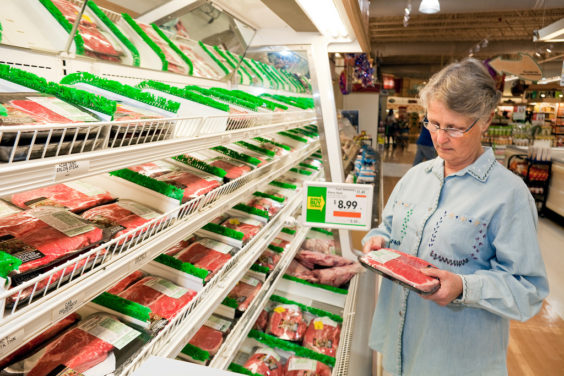
It can be difficult to save serious money on meat, since there are rarely coupons that you can combine with sales. Now, it could become a little harder, thanks to new regulations that are supposed to be for our benefit.
As savvy shoppers well know, “new and improved” can also end up meaning “more expensive.”
In this case, the “new and improved” part of your grocery store’s meat has nothing to do with what’s inside the package – it has to do with the outside. The label, to be precise.
New USDA regulations passed in May are now officially in force, after a six-month grace period. Retailers that sell fresh meat now have to specify on the label, where the meat comes from. The Country of Origin Labeling rule will tell you in what country the animal was born, where it was raised and where it was – well, turned into meat. In other words, you’re likely to see labels with phrases like “Born in Mexico, raised in the United States, slaughtered in Canada.”
The rules do allow retailers with squeamish customers to replace the unappetizing term “slaughtered” with the euphemistic, but arguably no less unsavory, “harvested.”
The idea is to give consumers more information about where their meat comes from. The rules apply to all unprocessed cuts of beef, lamb, pork, goat and chicken. So you won’t see new labels on, say, hot dogs, nor will your chicken nugget packages tell you whether they came from China. But the labels on ground meat, for example, must state all countries of origin that may be contained within. So if you see a label with a dozen different countries listed, showing just how many different cows are in those hamburger patties you’re thinking of cooking, you may opt to use that information to make a different choice.
Some say that’s a good thing. But others argue all of this information will come at a price.
Some retailers complained to the USDA that they’ll face increased costs, associated with retraining employees, replacing scales and upgrading distribution systems. And meat packers say complying with the rules involves a lot more than just making new labels – they’ll have to come up with new ways to segregate livestock purchased from different countries, since they’ll no longer be able to “co-mingle”. They say the rules could cost them up to $200 million. Tyson complained in a statement that the change will “require additional product codes, production breaks and product segregation… without providing any incremental value to our customers.”
A 2002 study published in the Journal of Food Distribution Research found that 73% of consumers surveyed would actually be willing to pay more for their steak and hamburger meat, if the packages contained country-of-origin labels. Those findings could give retailers and distributors all the information they need, to pass their extra costs right along to their apparently eager-to-pay customers.
That could also prove to be the case with another, unrelated meat-labeling change. Earlier this year, U.S. beef and pork trade industry groups came up with a new voluntary system for naming cuts of meat. The idea was to simplify and standardize names, to alleviate customer confusion. A “beef bottom round steak boneless western griller” would now be known as a “Western steak.” A “beef chuck under blade center steak boneless Denver cut” would be given the simpler name “Denver steak.”
Unlike the USDA country-of-origin rules, the name changes are not mandatory, and there’s no specific time frame to make the adjustments. But since butchers were going to have to change their labels anyway to meet the USDA deadline, there was some hope that they’d use the opportunity to also implement the name changes.
Part of the recommendations, though, involve renaming cuts of pork to resemble the names of their beef counterparts. So there will be “T-bone”, “Porterhouse”, “Ribeye” and “Tenderloin” pork – premium names for less-premium products. The National Pork Board is encouraging retailers to “capitalize” on these “consumer-friendly beef names” – by raising prices. Customers, the trade group advises, are “willing to pay more for higher-quality cuts like Porterhouse and ribeye, so you can charge more to secure better margins.”
To those who are more interested in saving money, than in calling their meat a new name and learning its life story – it seems there may well be such a thing as too much information.










